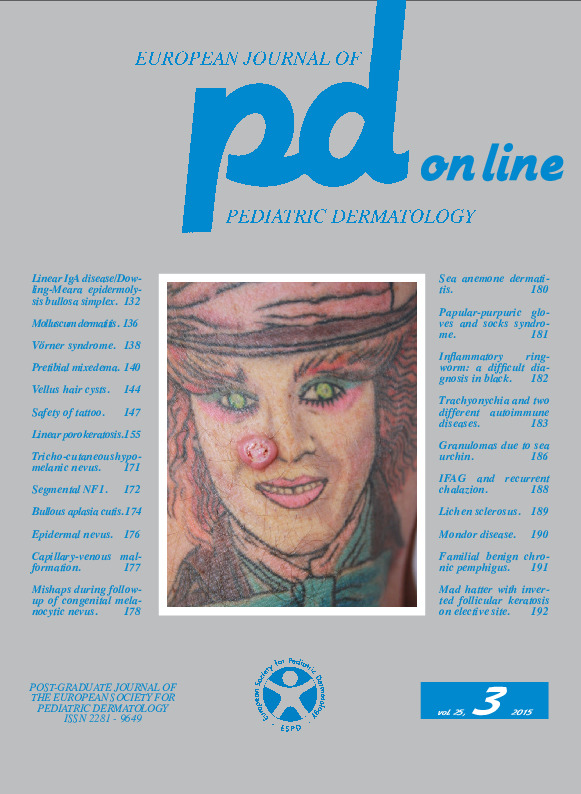Sea anemone dermatitis.
Downloads
DOI:
https://doi.org/10.26326/2281-9649.25.3.1144How to Cite
Favale M.G. 2015. Sea anemone dermatitis. Eur. J. Pediat. Dermatol. 25 (3): 180. 10.26326/2281-9649.25.3.1144.
pp. 180
Abstract
Sea anemone dermatitis is not uncommon, although in the literature of the past 40 years there are only 14 reports.In the child it is due to contact while sitting on rocks just below the surface or during underwater exploration; it may also be due to careless play in the child that knows the damaging effects of this coelenterate (1).
The skin lesions are due to a venom introduced by the thread of nematocysts due to rubbing on the skin or showers with cold fresh water.
The lesions are usually localized and more or less severe, but there may be systemic reactions (1, 2).
The therapy is based on the elimination of the tentacles with sea water, possibly heated to inactivate the venom, pliers and gloves; a symptomatic topical or systemic in the severe cases corticosteroid therapy can be useful.
Keywords
Sea anemone

